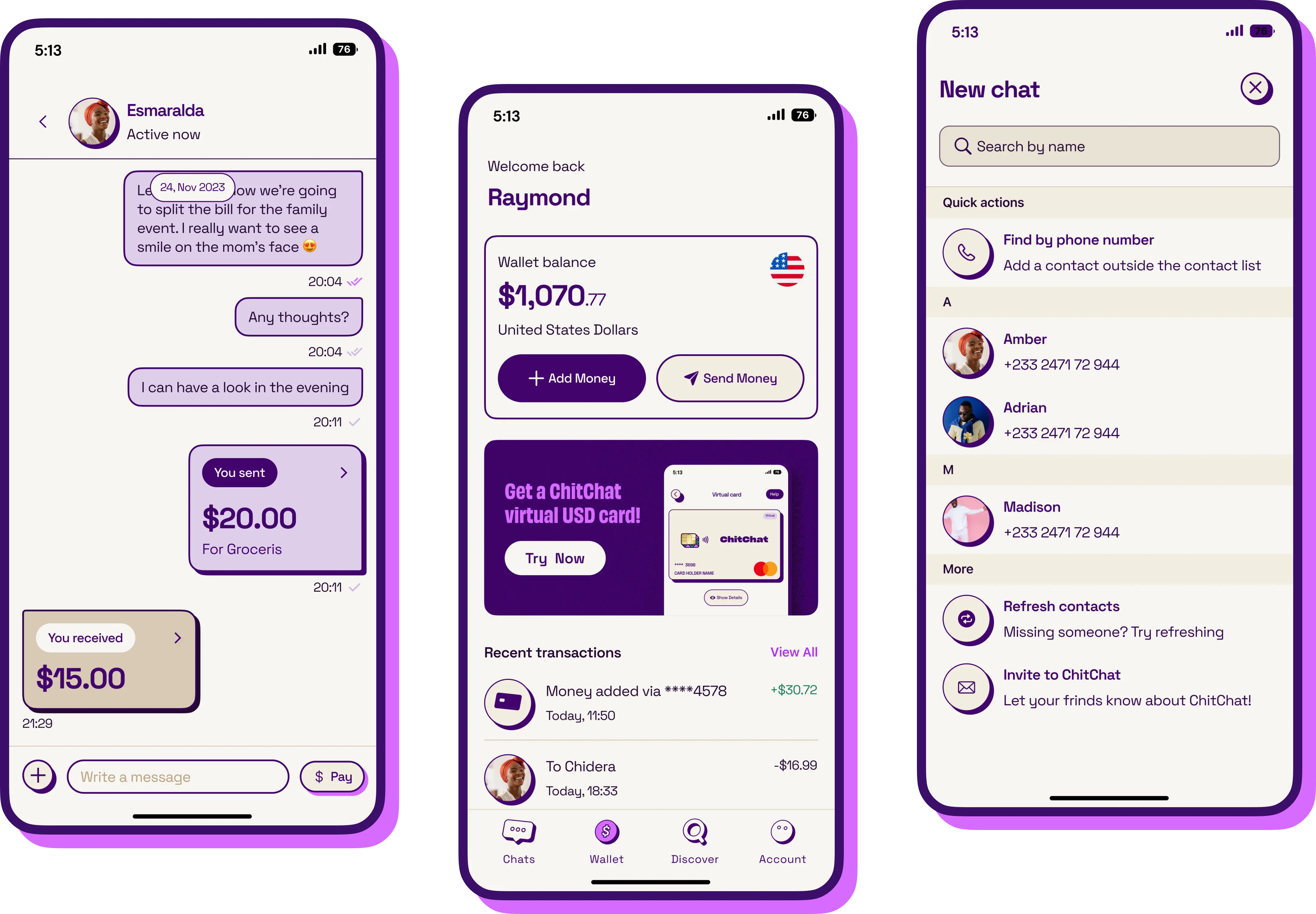ChitChat
ChitChat is an app that combines secure messaging with payments. It enables users across Africa to chat with each other over an encrypted platform. With ChitChat, one can send instantaneous payments to friends and family within chat conversations.
All CustomersMobile App Testing
We helped ChitChat prepare their mobile app for the public release. Our QA engineers ensured the app ran flawlessly on a broad spectrum of iOS and Android devices specific to the target market. We focused our efforts on guaranteeing top-notch security, performance, and usability.
Learn moreAutomated Testing
Our QA automation engineers helped ChitChat set up effective automated testing workflows to cover a wide range of functionalities in a short timeframe. We aimed for a 70% to 30% split between automated and manual testing, which resulted in a timely and obstacle-free launch.
Learn moreChallenge
ChitChat turned to QAwerk when they were in the early stages of development, crafting the core architecture and user stories. They hired us to establish and lead a comprehensive QA process from the ground up. This included both manual and automated testing to ensure a seamless and secure user experience.
The innovative nature of the ChitChat app presented unique testing challenges:
- In-depth payment testing: The in-chat payment functionality required rigorous testing. This demanded access to a diverse set of test bank cards and multiple test phone numbers to simulate various payment scenarios.
- Market specifics and device fragmentation: Unlike typical mobile app users in Europe or America, the target audience in Zambia primarily uses different phone models. We addressed this by studying usage data and assembling a comprehensive test phone set that mirrored the most popular devices in Zambia. The list of devices with different configurations was extensive.
- Enhanced security standards: Since the app deals with financial transactions, we were expected to exceed standard quality expectations. We needed to implement exceptionally deep and comprehensive test strategies to guarantee the app’s security and reliability when handling users’ money.
Let’s dive deeper into how we navigated these challenges.
Solution
We actively participated in the development process, analyzing each user story as it became available and identifying potential gaps needing clarification. Based on the user stories, we created robust test scenarios that covered every possible user interaction.
We conducted thorough manual testing and built automated testing frameworks for both the backend and frontend aspects of the app. Our test plan included the following testing types:
- Functional Testing. We executed a comprehensive suite of tests designed to verify the app’s performance against the functional requirements outlined in the user stories. This ensured that all features were implemented correctly and functioned as intended, meeting the defined user needs.
- Integration Testing. Since the app interacts with various third-party services like Primer and Onfido, seamless integration was crucial. We performed integration testing to ensure smooth data flow and functionality between the app and these external services.
- Compatibility Testing. We tested the app on a wide range of device models, operating systems, and screen resolutions. In total, ChitChat was tested on 24 iOS and Android devices.
- Automated Testing. We focused on automating both frontend and backend tests, leveraging the power of TypeScript for enhanced code clarity and type checking.
Also, we continuously monitor user feedback, translating it into clear bug reports with detailed steps to reproduce the bugs and sharing them with developers.
Test Automation
Our success with automated testing hinged on the choice of efficient tools.
Mocha, a JavaScript testing framework, provided the structure for writing our tests. For frontend testing, we adopted Appium, a popular framework for automating interactions with mobile apps. We utilized WebdriverIO, a powerful tool that acts as an Appium client, to streamline the process. This allowed us to write automated tests covering various aspects of the app, from user login and chat functionalities to core banking features.
BrowserStack, a cloud-based platform, offered a critical advantage – the ability to run our automated tests on a vast array of real devices with different configurations.
The automated tests for the backend, namely the app’s APIs, were written in Jest, a testing framework that utilizes TypeScript. TypeScript’s strength lies in its ability to check variable and function types, enhancing code clarity and preventing errors during development.
However, the tools alone, no matter how fast and reliable they are, can’t guarantee that everything will go smoothly. One major hurdle we faced was ensuring test stability across a wide variety of mobile devices. This was overcome by leveraging BrowserStack’s extensive collection of real devices, allowing us to test on actual hardware with various configurations.
Another challenge emerged due to the app’s numerous integrations with third-party applications. These integrations added complexity, especially for automated testing. Tests for these functionalities were often written using webhooks (a communication method between apps), but their instability required frequent code adjustments.
Finally, parallel execution of tests, while offering efficiency gains, occasionally led to instability issues. In some cases, tests might pass twice but fail on the third run. To address this, we strategically divided the tests into three groups based on functionality. Tests from two groups were run simultaneously for maximum speed, while the group containing the unstable tests ran sequentially. This approach effectively resolved the instability and ensured consistent test results.
The implemented testing strategy achieved a ratio of approximately 70% automated tests to 30% manual tests. This emphasis on automation yielded significant benefits. Automated tests sped up test execution, enabling us to cover a broader range of functionalities more efficiently. This led to faster bug identification and resolution, ultimately contributing to a more secure and stable application.
Bugs Found
Most bugs we encountered concerned transaction processing and data input.
Actual result: Nothing happens after taping the back button on the ‘Select Country’ page.
Expected result: The user can use the back button to navigate to the previous page.
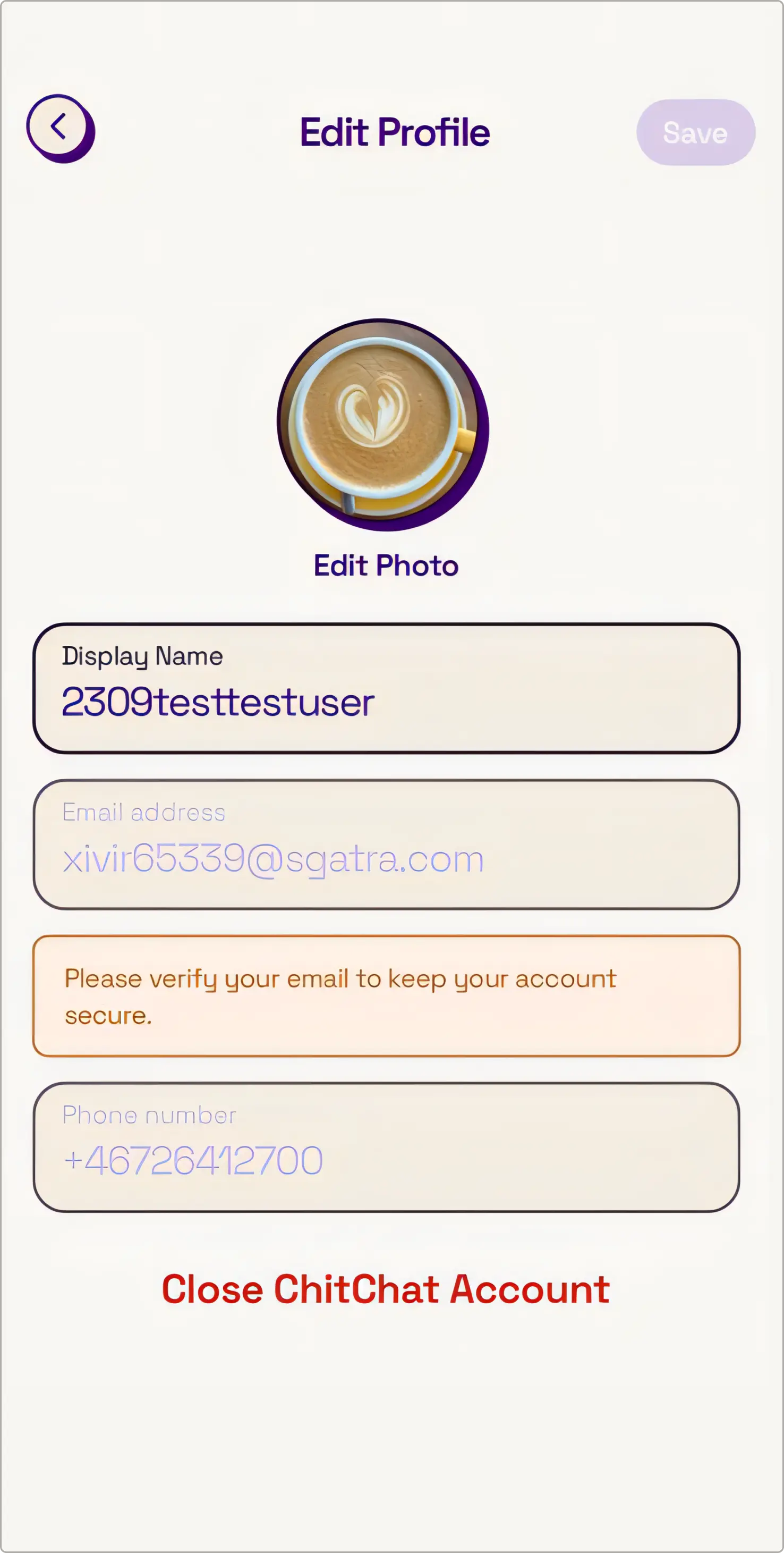
Actual result: The validation message is displayed for users with already verified emails.
Expected result: No validation message appears for users who have completed verification.
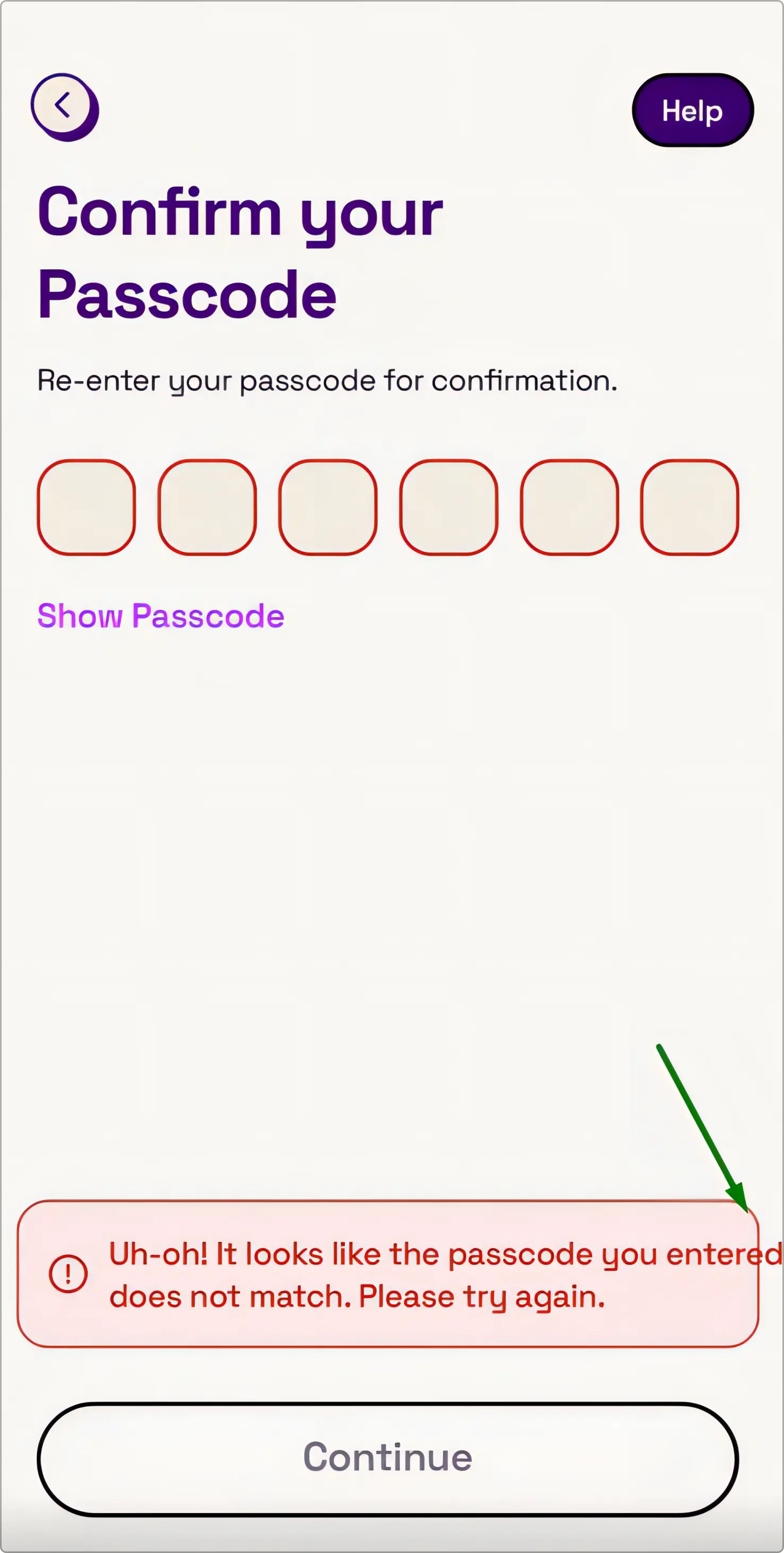
Actual result: The validation message text overflows the dedicated container.
Expected result: The validation message text fits within container boundaries.
Result
With the help of QAwerk, ChitChat achieved a timely release of their minimum viable product (MVP) within a remarkably short timeframe. The Chit-Chat app was launched in March after only 3.5 months of development, exceeding expectations for speed and efficiency. News of the app’s launch was met with positive reception, as evidenced by coverage in leading African and global media outlets.
As Chit-Chat expands its functionalities and user base across Zambia, Angola, Tanzania, and Ghana, the QAwerk team ensures that future iterations maintain the high standards of security, user experience, and performance established during the initial development phase.
In Press
Tools
 Qase.io
Qase.io BrowserStack
BrowserStackQAwerk Team Comments

Yaroslav
QA automation engineer
This project was a personal highlight, offering both an interesting experience and a significant boost to my professional development. I gained extensive hands-on experience in mobile app test automation, mastering new tools and technologies in the process. Mocha, WebdriverIO, and Browserstack were instrumental – proving reliable, fast, and user-friendly.

Kateryna
QA automation engineer
I got to wear many different hats on this project! I did some manual testing of the mobile app and CRM system, then switched gears to writing automated tests for both the frontend and backend. Communication with the client’s team was fantastic – we brainstormed the best automation tools together and kept the conversation going throughout development. Super proud of the results and the high-quality app we delivered!
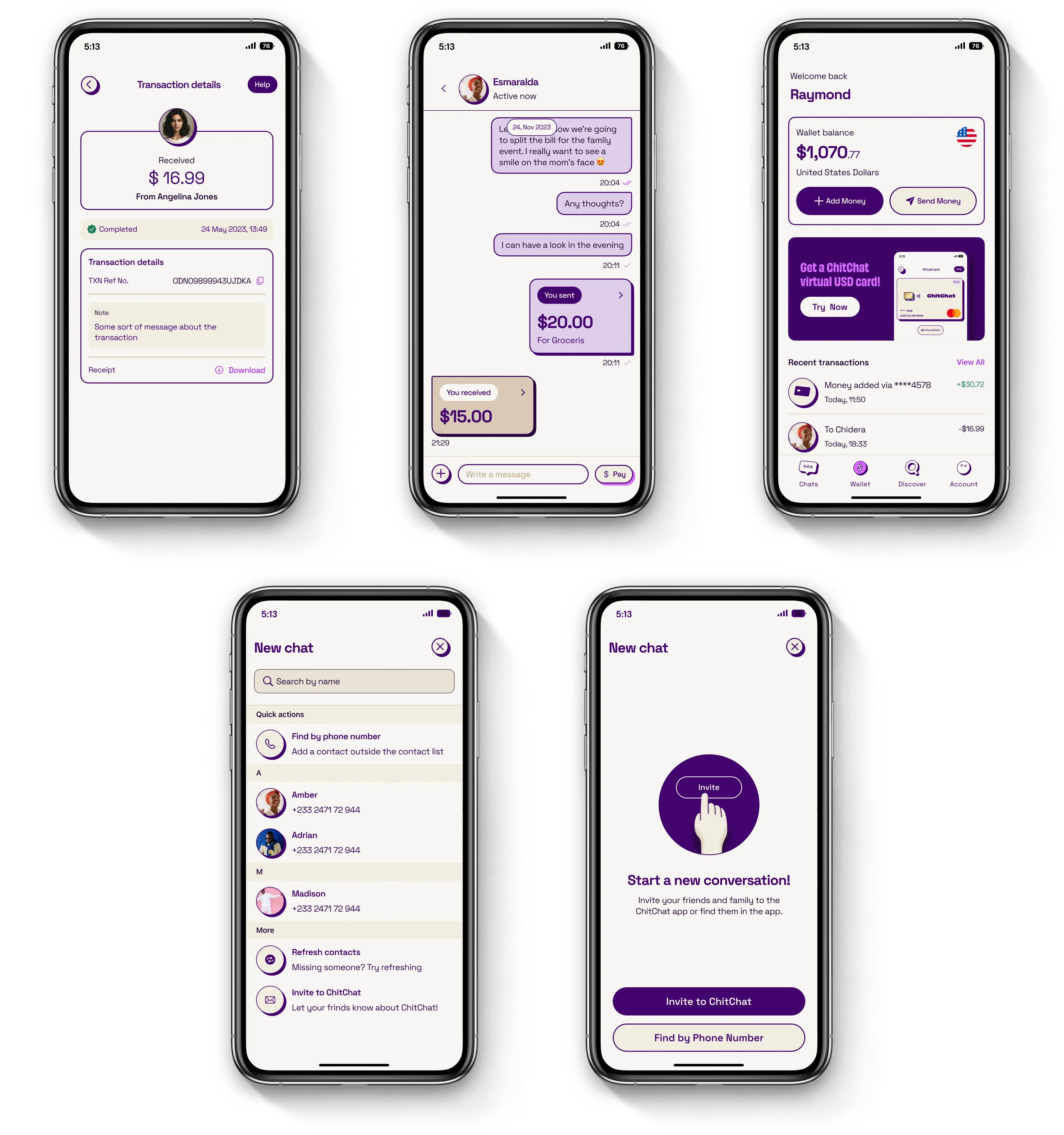

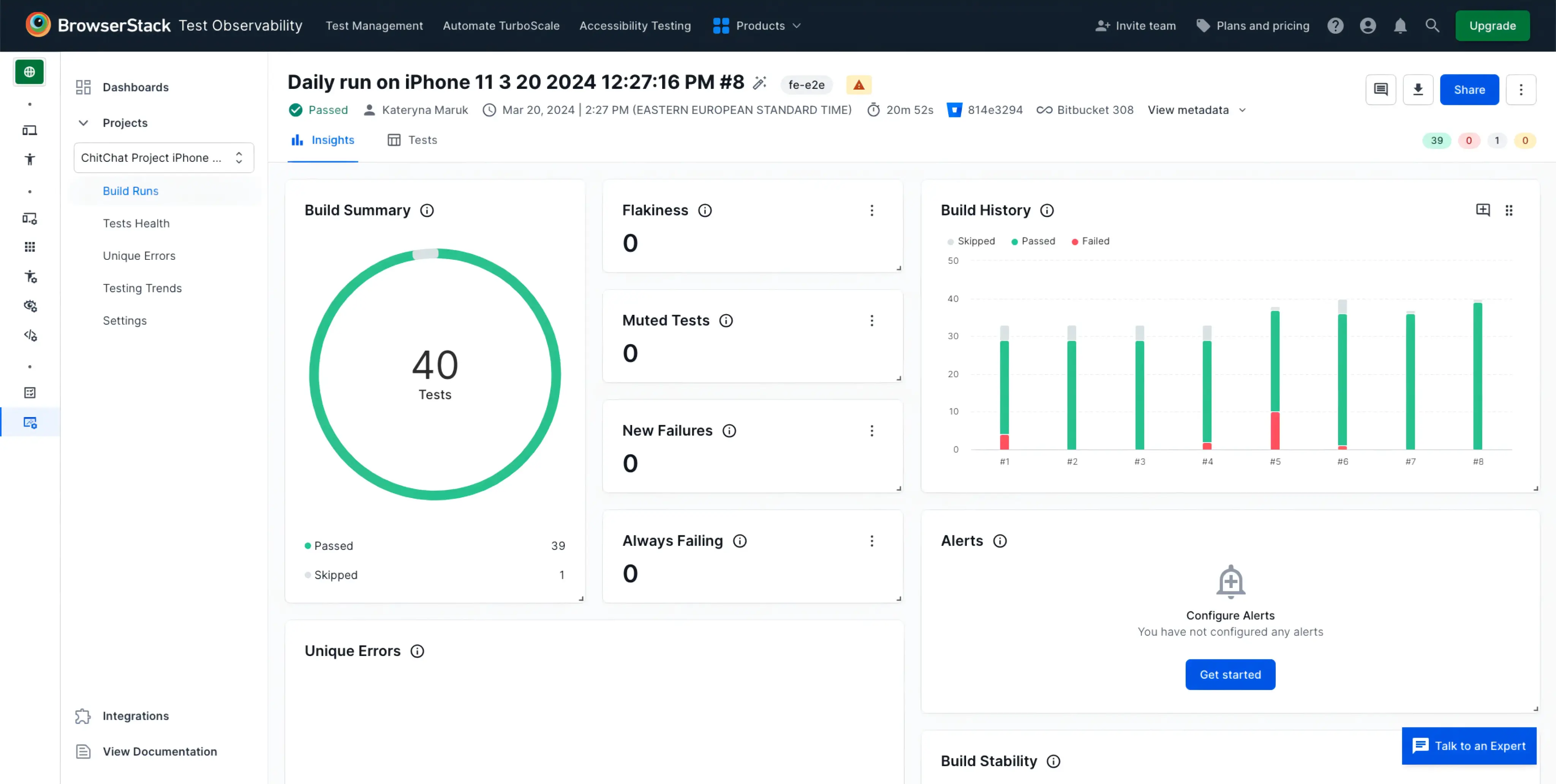
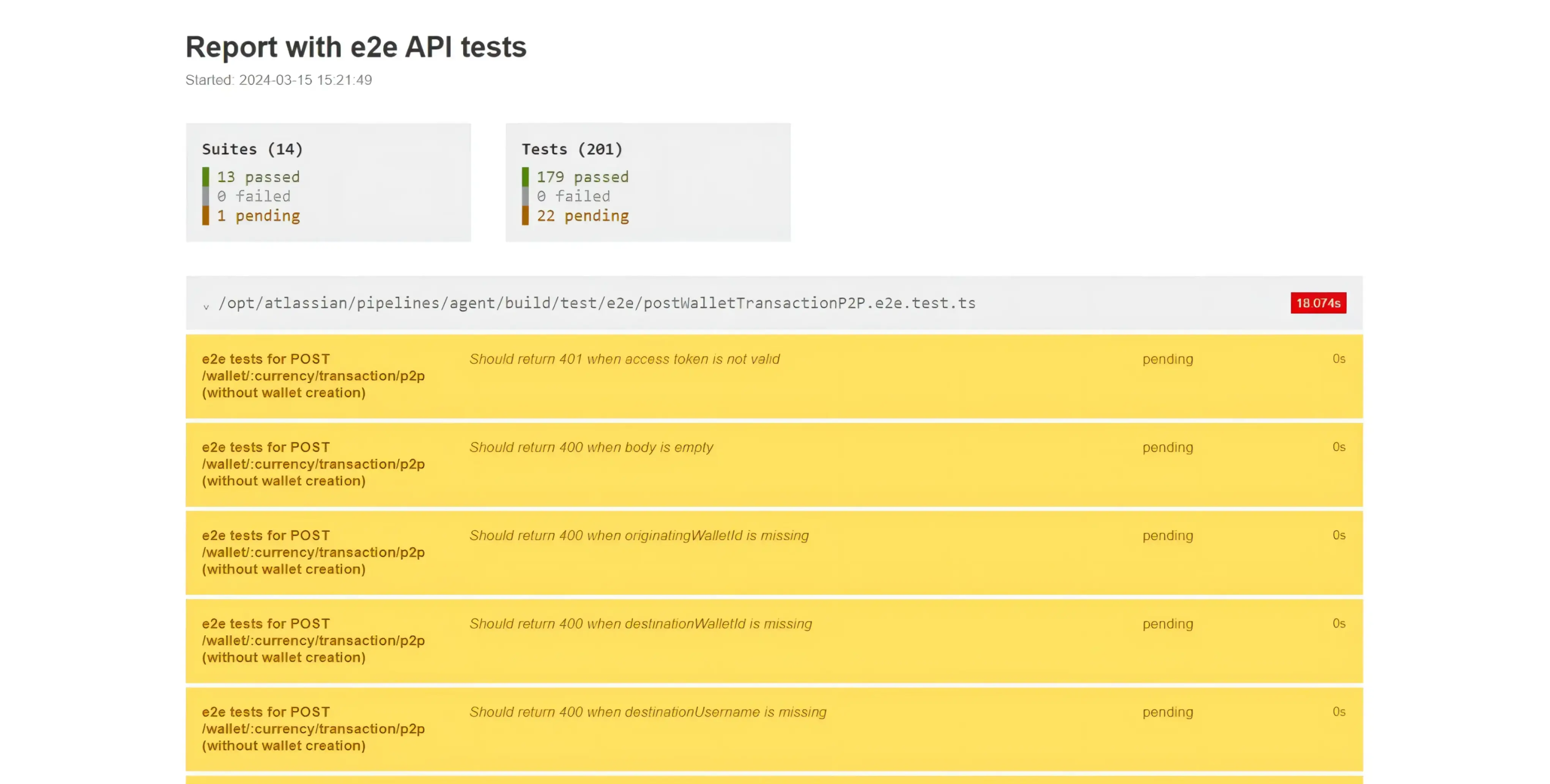
Related in Blog
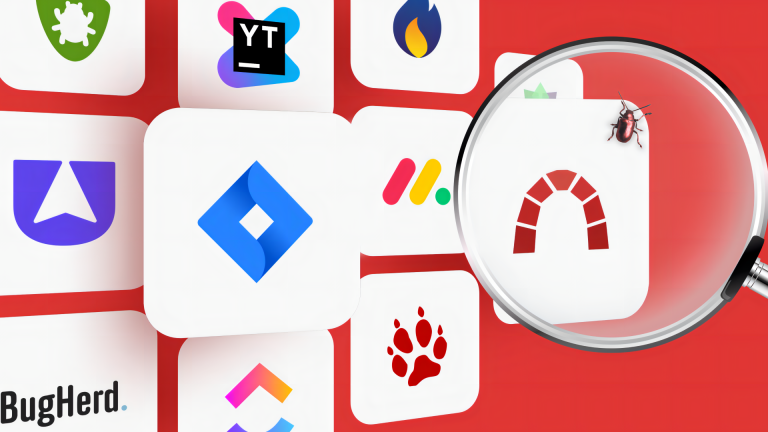
11 Best Bug Tracking Tools & Software in 2024
Software glitches happen, and they can be a real headache. They slow us down, confuse users, and hurt the overall experience. Finding and fixing these bugs quickly is essential....
Read More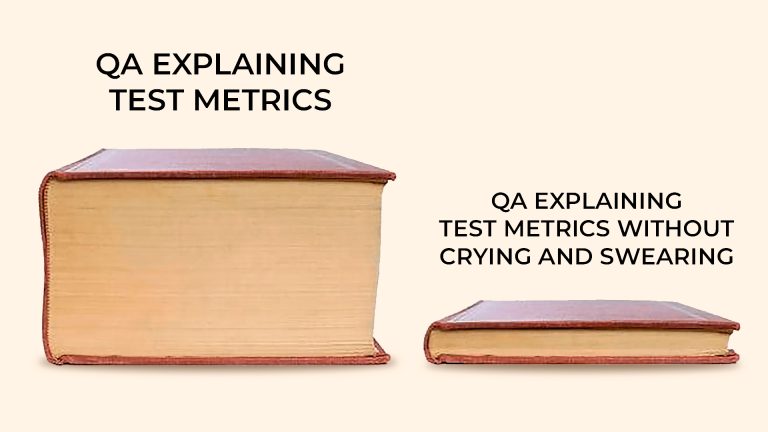
Most Important Software Test Metrics
Product testing is a crucial stage in software development, and it tolerates no levity. It relies on testing tools and frameworks to take your software product through numerous test cases that simulate real-wor...
Read MoreImpressed?
Hire usOther Case Studies
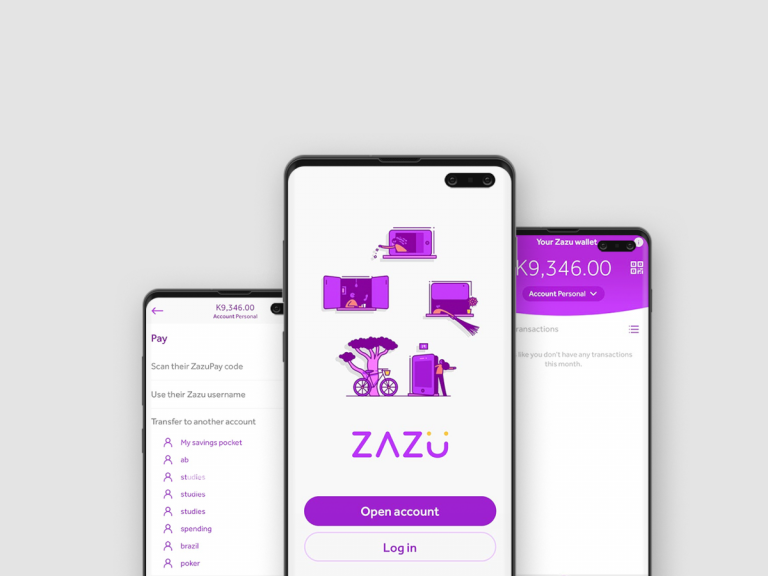
Zazu
We helped the #1 finance management app in Africa eliminate their bugs and become a Mastercard Principal Member
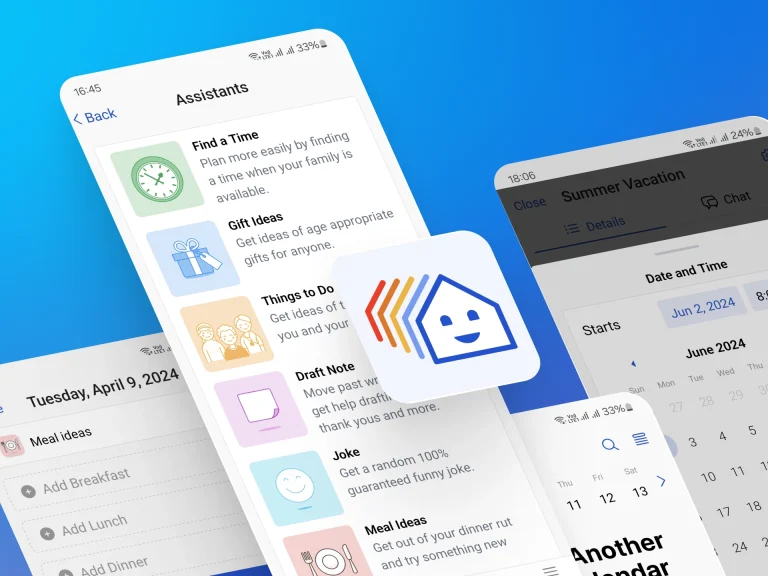
BeFamily
We ensured this app had a zero-bug product launch, tripling their projected install numbers

Magic Mountain
We enabled the UK’s #1 social fitness app to transition from an MVP to a Premium offering, and their subscriptions are growing daily




